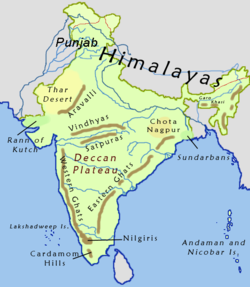
Back Kryt-Paleogeen-uitwissing Afrikaans انقراض العصر الطباشيري الباليوجيني Arabic Estinción masiva del Cretácicu-Paleóxenu AST Масово измиране креда – терциер Bulgarian ক্রিটেশিয়াস–প্যালিওজিন বিলুপ্তির ঘটনা Bengali/Bangla Kredno-paleogensko izumiranje BS Extinció del Cretaci-Paleogen Catalan Vymírání na konci křídy Czech Digwyddiad difodiant Cretasaidd-Paleogenaidd Welsh K/Pg-grænse Danish



The Cretaceous–Tertiary extinction event, now called the Cretaceous–Palaeogene extinction event,[1] was about 65.5 million years ago.[2] It may be called the K/T extinction event or K/Pg event for short. This is the famous event which killed most of the dinosaurs at the end of the Cretaceous period.
It was a large-scale mass extinction of animal and plant species. The event marks the end of the Mesozoic era and the beginning of the Cainozoic era.[3][4]
- ↑ Because the term "Tertiary" is out of date.
- ↑ Renne, Paul R.; Deino, Alan L.; Hilgen, Frederik J.; Kuiper, Klaudia F.; Mark, Darren F.; Mitchell, William S.; Morgan, Leah E.; Mundil, Roland; Smit, Jan (2013). "Time scales of critical events around the Cretaceous-Paleogene boundary" (PDF). Science. 339 (6120): 684–687. Bibcode:2013Sci...339..684R. doi:10.1126/science.1230492. PMID 23393261. S2CID 6112274. Archived from the original (PDF) on 2017-02-07. Retrieved 2018-11-14.
- ↑ Fortey R (1999). Life: A natural history of the first four billion years of life on Earth. Vintage. pp. 238–260.
- ↑ With "Tertiary" being discouraged as a formal time or rock unit by the International Commission on Stratigraphy, the K/T event is now called the Cretaceous–Palaeogene extinction event by many researchers. Gradstein F, Ogg J, Smith A. A geologic time scale 2004.
{{cite book}}: CS1 maint: multiple names: authors list (link)